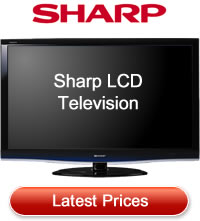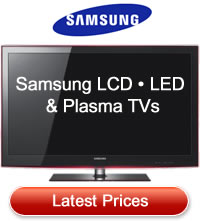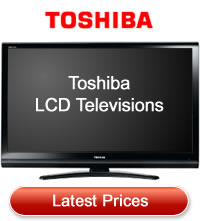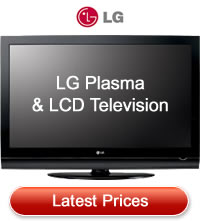New LED Televisions
 LED Flat screen TVs
LED Flat screen TVs
In the past the first decision when buying a new flat screen TV was usually the choice between a Plasma screen and an LCD – well times are changing.
Plasma screens where recognised for availability of larger screen sizes, display of deeper blacks, rich colour and the handling of fast moving scenes.
LCD panels where seen as lighter making them better for wall mounting and suffered less screen burn-in. However, recent technological advancements is changing things. You can now buy slim plasmas for wall mounting and LCD televisions with 100Hz or 200Hz technology that are great at handling fast moving action scenes.
2009 also sees most of the top brand manufacturers unleashing TVs with internet functionality, LED (Light Emitting Diode) and OLED technology. On the one hand selecting a flat screen TV is not that simple any more but getting it right opens up a whole new world of home entertainment features like never before.
Manufacturers may not be quite ready to take the world by storm with full web enabled internet access but the arrival of LED TVs is sure to. Samsung is the world’s largest television producer and is a key driving force behind LED technology although others are not far behind.
LED Technology
You will be seeing adverts of Samsung’s Next Generation LED TVs boasting all the benefits and improvements that LED backlighting brings. Sharp, Philips, Samsung, LG, and Sony have launched their own LED televisions offering ultra slim panels, greater contrast levels and environmentally friendly models.
The main difference between the LCD and LED televisions is the backlighting system used to create the picture on the screen. Ordinary fluorescent backlights on a LCD (CCFL) illuminate the entire screen from the rear and contrast ratios can suffer when these are dimmed.
The new LED technology is resulting in some incredibly thin flat panel screens with high contrast images. LED panels have multiple LEDs that can be individually adjusted to brighten, dim or turn off depending on what’s being displayed on the screen.
This results in better contrast with the deeper black levels that you would normally associate with plasma screens.
Other benefits from the use of LEDs are improved colour, sharper images and ultra thin panels. LED TVs are also less power hungry making them kinder to the environment.
LED TV Manufacturers
In an ever growing market LCD and Plasma TVs are advancing at such a rate that the future looks exciting and can only get better. Manufacturers like Sony are already producing televisions that are astonishingly thin at just 9.9mm thick thanks to their edge lit LED technology.
Sony LED TV
Sony boasts the worlds slimmest TV as of October 2008 with their ZX1 series. Sony’s Edge LED Technology is used in their super thin 40 inch KDL-40ZX1 model. LEDs are arranged around the side of the screen resulting in these really thin screens.
Sony’s other LED TVs use RGB Dynamic LED backlighting these include the KDL-55X4500 and KDL-46X4500. These TVs use red, green and blue diodes for backlighting rather than the white ones used on the KDL-40ZX1.
Sharp LED TV
Sharp produce 52 inch (LC-52XS1E) and 65 inch (LC-65XS1E) LCD 100Hz TVs that use the RGB LED backlight system. These screens are just 22.8mm thick at their thinnest part although with a price of around £9000 they won’t be in everyone’s shopping basket just yet.
Flat TVs that use RGB (red, green, blue) LEDs are more expensive due the processing system so there is not going to be a great demand at the moment.
Philips LED TV
Other contenders with releases in 2009 are Philips and LG. Both favour white backlighting in their models and the Dutch giant already has an impressive model out the Philips 42PFL9803H featuring LED Lux display. LED back lighting has local dimming with over a 1000 LED’s operated selectively to generate brilliant light in bright areas and dim dark areas of a scene.
Samsung LED TV
Leading the way with an impressive range of LED TVs is Samsung. Samsung produce LED TVs in a range of sizes from 32 inch to 55 inch.
Samsung Series 6
Samsung Series 7
- 32 inch UE32B7020, UE32B7000
- 40 inch UE40B7020, UE40B7000
- 46 inch UE46B7020, UE46B7000
- 55 inch UE55B7020, UE55B7000
Samsung Series 8
You can expect more LED releases in 2009 and 2010 with Samsung, Sony and Sharp being joined by Philips, Toshiba and LG in the race for the growing LED TV market.





























